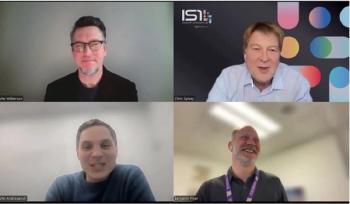
US and European Pharma Manufacturing Face Diverging Paths to Resilience
Maggie Saykali, Cefic, explains that Western pharma vulnerability stems from market loss to Asia, caused largely by short-sighted offshoring due to environmental costs.
In this part 3 of a 3-part interview regarding the presentation “The Critical Medicines Act: Game-Changing Opportunity for a Sustainable and Resilient Supply Chain?” at
This erosion of manufacturing capability carries significant implications for supply chain resilience, she continues. The US, despite remaining powerful in the creation of innovative molecules, faces overwhelming dependence on external sources for generic drugs, with reliance exceeding 90%, states Saykali, adding that a market share as low as 10% indicates a severe loss of infrastructure, talent, and know-how, leaving the country highly vulnerable and requiring substantial financial investment to achieve a sustainable position.
Europe, however, still retains the necessary talent, know-how, and infrastructure due to its higher market share. While the situation was drastically different 40 years ago, Europe is now facing a crucial window to act, lest it reach a point where necessary recovery costs become prohibitive, Saykali says. The core difference between the current challenges facing the two regions lies in the amount of investment required to reverse the manufacturing decline.
The shift away from Western production was initially driven by economic factors, specifically the cheaper cost of manufacturing elsewhere. "But don't forget that… 30 years ago, it was also because we started in Europe and in in the US to have very strong environmental laws… It takes a lot of money to make it clean and environmentally sustainable, so one of the options was ship it off. But that was a short-sighted decision, and we are paying the price now."
Check out
Transcript
*Editor’s Note: This transcript is a direct, unedited rendering of the original audio/video content. It may contain errors, informal language, or omissions as spoken in the original recording.
This is the interesting difference between the US and Europe. So, the study that we shared with the European Commission when we were elaborating the Critical Medicines Act shows the loss of market shares for the US and for Europe, and of course, in the case of China and India, it's a gain of market share. and you could see that the US actually are now at more or less 10% market share for small molecules. Europe is at around 33-34%, and of course China and India have picked up all the slack.
So, if you go back 40 years ago, the situation was completely different. At 30-something percent market share, we still have the talent, we still have the know-how, we still have the infrastructure in Europe. 10% is too low. There you have lost the infrastructure or big parts of it. You've lost the talent, the know-how, and you're much more vulnerable or you have to put a lot more money on the table to be able to go back to a sustainable position.
Whereas for us in Europe, it's really time to act now if we don't want to go to a point… it's not the point of no return, it's the point where the return will cost you too much. So, that is where we are now and that's the essential difference between what's happening in the US and what's happening in Europe.
And the US are still very strong in making innovative molecules, but generics, totally dependent. I think the number is above 90% dependence on external sources for generics, because essentially, it's cheaper. But don't forget that a few years ago, 30 years ago, it was also because we started in Europe and in in the US to have very strong environmental laws and some of the production of some of the active ingredients and intermediates is not… I mean it takes a lot of money to make it clean and environmentally sustainable, so one of the options was ship it off. But that was a short-sighted decision, and we are paying the price now.
Newsletter
Get the essential updates shaping the future of pharma manufacturing and compliance—subscribe today to Pharmaceutical Technology and never miss a breakthrough.





